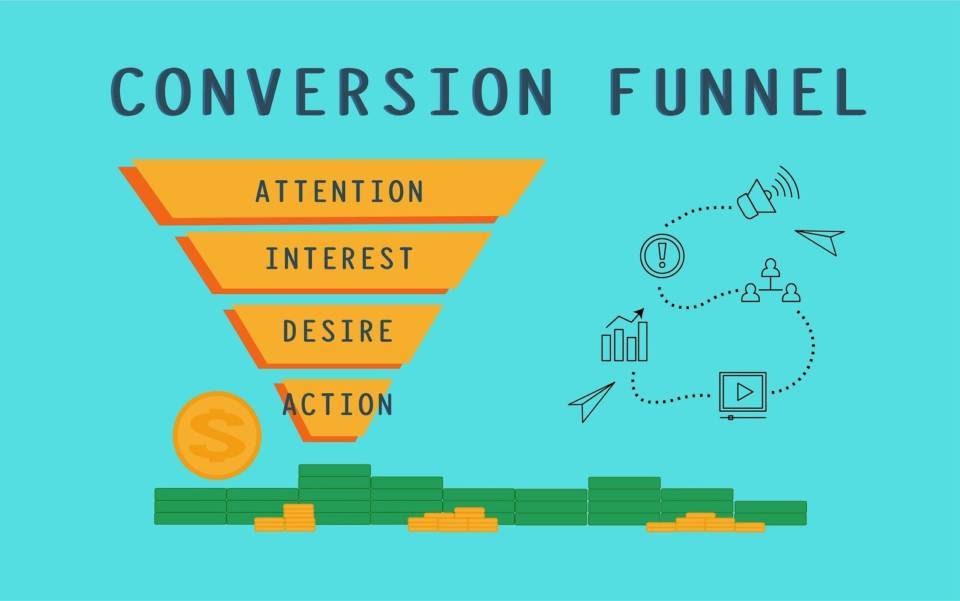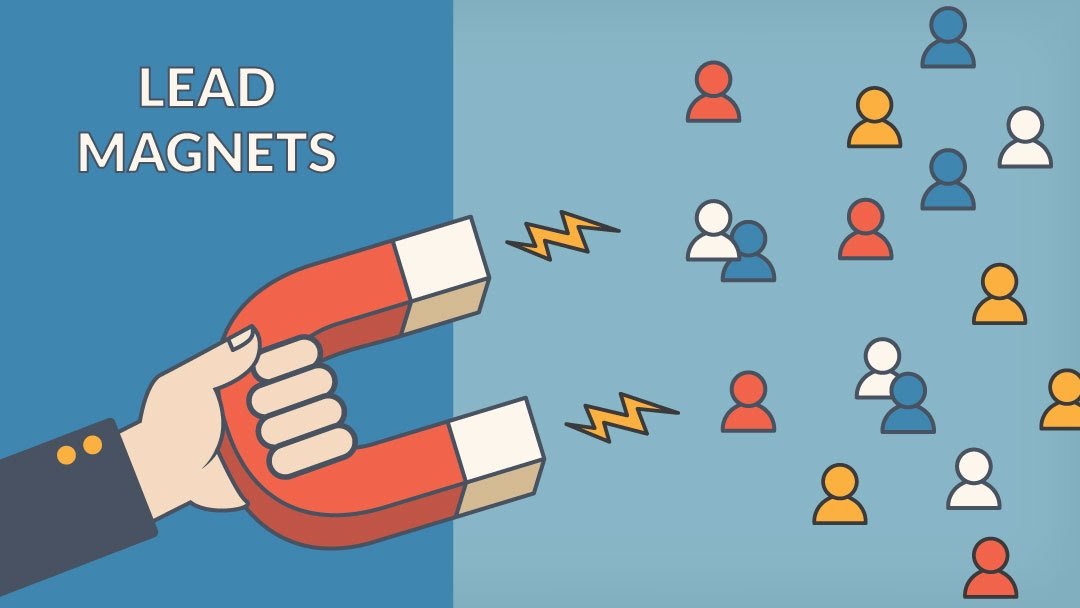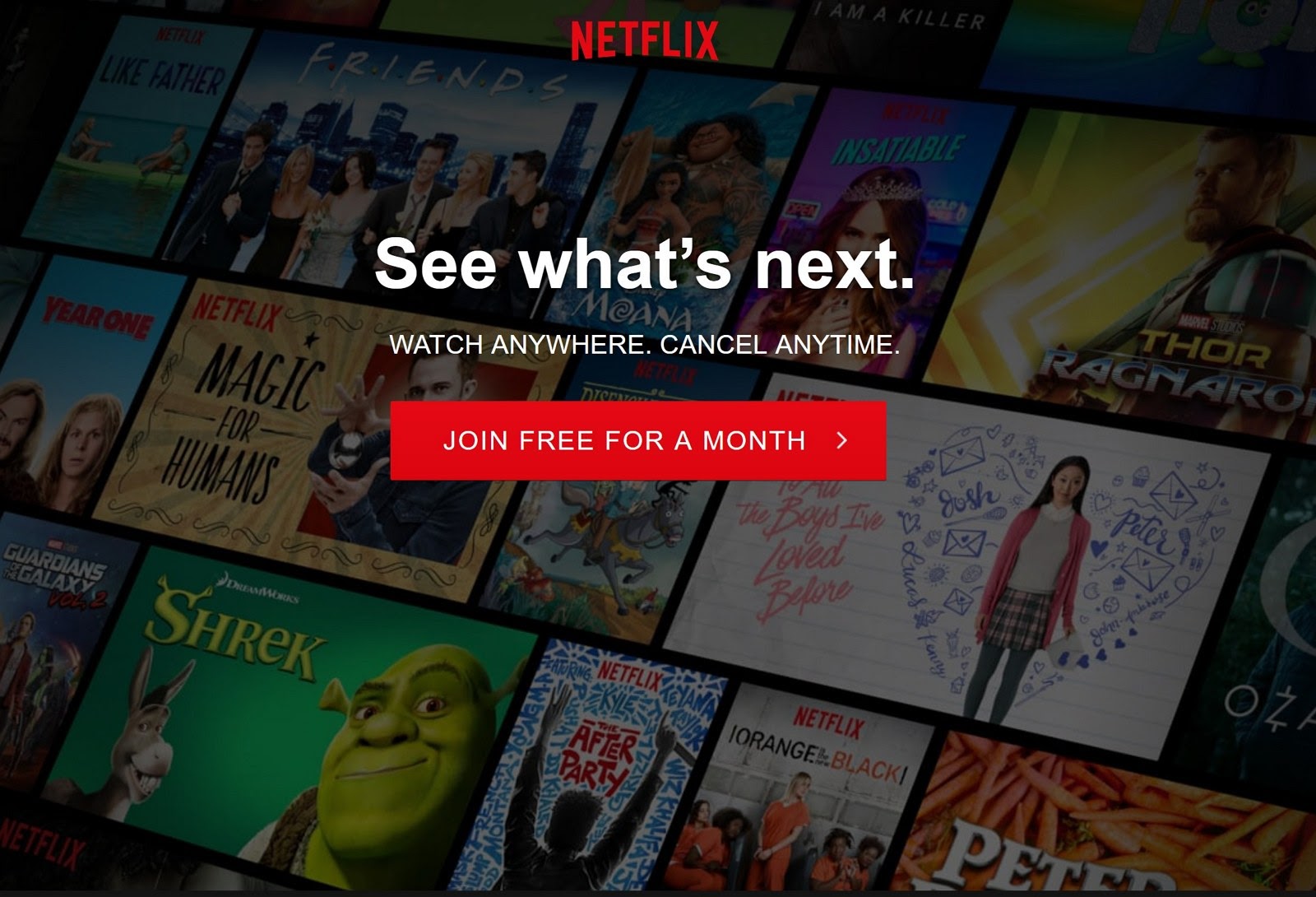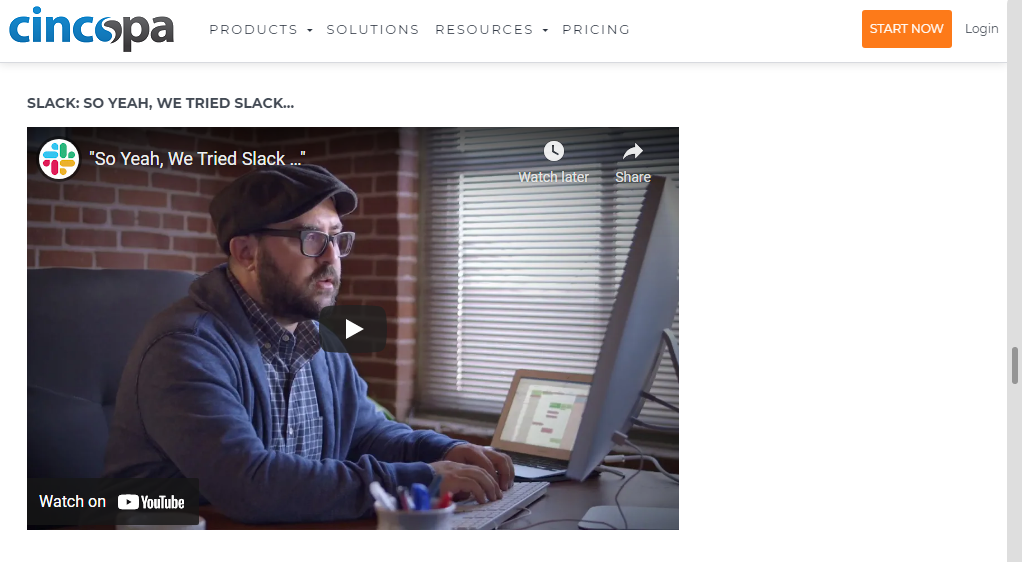According to a study carried about by Salesforce, 79 percent of leads never converted into subscriptions or sales. The study also revealed that 68 percent of businesses failed or never attempted to determine sales funnels. The lack of proper guidance made it difficult to convert the leads into sales.
Surprisingly, you might not know about marketing funnels, but you surely have gone through a number of them several times. Marketing funnels are everywhere. They are crucial for the growth of a brand, attracting new leads to websites, and customer retention. Do you want to know how to create marketing sales funnels?
Before we move on to that, let’s first understand some basics about these funnels. So are you ready to enter the world of market funnels? Here we go:
What is a Marketing Funnel?
A marketing funnel is a visual representation of a buyer’s journey. It includes stages from how a visitor finds your brand to how they convert into a customer.
Or
You can also say it is a process of trying to convert the target audience into customers and then convince them to become loyal consumers and continue purchasing products from your business.
Throughout different funnel stages, a business needs to nurture their visitor’s needs and use tactics to move them to further stages.
Always remember- a marketing funnel doesn’t need to be complex.
In the starting, go with simple marketing funnels, and once you know what’s working and what isn’t in terms of performance metrics, then you can continue to optimize it.
The most commonly used B2B marketing funnel structure consists of four steps that are :
- Attention
- Interest
- Desire
- Action

1. Attention: It’s the stage when your visitors get aware of your business and find out that you can solve their problem. These days there are tons of ways you can use to grab your target audience’s attention and move them towards your upper marketing funnel. Here are a few examples:
- By participating in a podcast
- Using Facebook Ads
- Promoting your product on other website’s articles or blogs
- By showing up in your target lead’s Pinterest dashboard
- By ranking high on the Google SERPs
- Getting a shoutout from an influencerExample Of Attention: You are scrolling through your Instagram account. And suddenly came across Flipkart’s ad about their “Big Billion Days.” You find it impressive and decide to visit flipkart.com to know about this deal in detail. The ad was what caught your ATTENTION and encouraged you to enter the marketing funnel of this brand.
2. Interest: At this stage, they assume you can solve their problems, so they start developing interest in your brand. They visit your website and look for the solutions. This is the stage where you are offering them useful information through free and valuable content, developing your brand’s credibility.
“Your focus should always be to appear like an expert.”
When you provide your customers with solid advice and solutions that don’t feel sales-driven and cringy, you develop trust. This way, when you actually start leading them to the further stages of the funnel and bring up your services and products, they’ll be more open to them.
Example Of Interest: While scrolling through the search results of “best marketing company,” you clicked on the first link of the page, as you find it impressive. With the hope that this agency can fulfill your needs, you start reading the information on the landing page. The content was helpful, so you decided to stay on the website to learn more about the agency.
This is the best example of the “INTEREST stage”- when you get interested in learning about a brand, assuming they’ll solve your problem. So you visit their website and read the content, entering the second step in the funnel.
3. Desire: The visitor has read everything they need, and now they want to convert. Every few visitors, compared to that you see on the first stage, reach this step. This is when you can bring up deals that they cannot resist. By offering strong and irresistible offers, you can make them sure about their decision.
Example Of Desire: Carrying forward the example of “Interest”- reading the content they offered assured you that they are right for you. So you decided to hire them. This is when you enter the third stage of the marketing funnel when your INTEREST is converted into a DESIRE to hire their services.
4. Action: The moment you have been waiting for! The last step where your efforts pay off: the purchase. People who have reached this stage are the ones who have decided that your brand is best for them and they’ll surely like to deal with you again.
Example Of Action: You are signing the contract and entering your bank details to pay for the services. Now you are at the final stage of the mid marketing funnel- the ACTION.
Make sure you keep the buying process as simple and seamless as possible. Avoid including unnecessary columns in your purchase form.
Here’s what Miranda, Founder of VinPit, has to say about the marketing and sales funnel they use, covering all the above points:
“The people at the top of the sales funnel see our advertisement. A certain percentage of them decide to tap on it. That’s the next of the funnel. Then one customer sees service at a discount. The thumb through the details, and now they’re at the next step of the funnel. Then the customer decides to purchase that service and proceeds to the check-out. Which is also the last stage of this funnel. If all goes well, they finish the purchase and reach the bottom of the funnel. This same process plays out for every business in one way or the other.”
But is it really necessary to use marketing funnels on your website? Isn’t it possible to attract more customers without it? What’s its purpose? Here are your answers –
Importance Or Purpose Of Marketing Funnel

Image Credit: ligonmarketing
The major purpose of marketing funnels is to gain more sales and attract more customers. But don’t you think that’s the same core purpose of whole marketing? Yes, it is.
Talking more specifically, the marketing funnel’s purpose is to help you create well-defined, measurable, and structured marketing strategies that lead your customers through a seamless buyer’s journey.
With the use of these funnels, you can easily figure out the barriers stopping your visitors from getting converted. Without them, it will be quite difficult for your business to determine your lacking points. Once all the necessary changes are made according to the report of the funnel, you can experience a better conversion rate. The basic idea behind a marketing funnel is to find out ways to push a visitor to the last stage that is action.
Now let’s dig a little deep into marketing funnels and find out about their components:
Components Of Marketing Funnel
Different leads on different stages need to be treated differently. People on the awareness stage don’t have to be pushed directly to the core offer. But instead, they should be provided with content that educated them about your business.
Till now, you have learned about what marketing funnels are, the stages they constitute, and their relevance. But an important topic is still left to cover, without which it’s hard to learn how to create a funnel- the components of a marketing funnel. Here are all of them:
Lead Magnets

Lead magnets are an entry point of your digital marketing funnels. They are initial high-value deals that you provide your target audience in exchange for their contact information like email address, phone number, etc.
The goal of this component is to convince your leads to give you their contact information in barter for useful, high-quality, and valuable pieces of content. That is why all marketing funnels are also called lead funnels.
Remember- the content of a lead magnet needs to be actionable. They must assure your leads that your brand is worth giving their details.
Tripwire
A tripwire is a service or product which is priced at either affordable or at a very low cost. A tripwire must have an amazing value. It can’t just be any low-priced offer or deal that is not worth anything because that will not improve the conversion rate.
“The major goal of this component is to persuade your target audience – that is to make them engaged with your content – to buy this low-cost deal and provide you with their credit card information.”
Your audience should find value in your tripwire. Motivate them to move further to the next step in the buyer’s journey and hence purchase your services and products.
Landing Pages
Landing pages are the house of our tripwires and lead magnets. It is where your audience will stay, read your content and provide their email address, payment information, etc. You have to make your call to action landing page as attractive and value-filled as possible. Leads should feel worth spending their time on it.
In addition to creating landing pages, make sure to build a “THANK YOU” page linked to tripwire and magnets. It’s a page where you can divert your audience, after they give the necessary information, to other valuable content such as your social media accounts, videos, and blogs.
How many types of marketing funnels are there? Jesus! So many people are asking the same question. If you have the same question, the answer is right below.
Different Types Of Funnels
There are so many names of water like- drink, H2O, aqua, and many more. But does having different names mean it serves a different purpose? Not exactly. You can call it by any name, but its main job will always be to quench your thirst.
Similarly, there are many types of marketing funnels, but all of their end goals are the same- to track or map out the steps that visitors take to convert. Following are examples of the top three popular types of funnels, along with how they have been used by well-known brands:
Sales Funnels – Example: Netflix

Netflix follows a 7-stage marketing purchase funnel that attracts viewers with an irresistible offer- a “30 days free trial”. Here’s how the sales funnel stages looks like:
Stage1: Visitors enter their sales funnel through a call-to-action button present on the landing page- “JOIN FREE FOR A MONTH.”
Stage2: Now, Netflix takes its user to the plan introduction page, where it asks to view different plans. “SEE THE PLANS”- is an effective call to action (CTA) used here.
Stage3: In this stage, the visitor chooses a plan from three options- Basic, Standard, and premium. And move to the next stage by clicking on CONTINUE(CTA).
Stage4: It’s an introduction page where Netflix suggests the user to create an account. User clicks on CONTINUE to create one.
Stage5: The user reaches the SignUp page to create their account. They enter their email address and set a password for their Netflix account. By clicking on CONTINUE, this streaming platform takes them to the next stage.
Stage6: In this stage, Netflix asks the user to set up their payment method for renewing their account after the free trial offer. Choosing the payment option takes them to the final stage of their funnel.
Stage7: In the last stage, the user enters their payment information and becomes Netlflix’s customer. After clicking on the START MEMBERSHIP, the user continues using this platform.
Lead Magnet And Email Funnels- Example: Spotify
Spotify uses a 3-stages funnel which is a combination of lead magnet and email marketing funnel. This platform attracts traffic to its funnel with “FREE MUSIC STREAMING” offers through emails. Here’s an in-depth explanation of each of the funnel stages:
Stage1: The first stage starts with the CTA landing page of Spotify. Visitors click on the CTA provided on the landing page- GET SPOTIFY FREE. Clicking that green button moves them to the next stage of the funnel.
Stage2: In this stage, the visitor has to create an account by filling the Sign-Up form. After entering the required information, they click on the SIGN-UP button.
Stage3: Now Spotify directs the user to its Thank You page, which confirms that accounts have been successfully created. After installing the desktop software or mobile application, the visitor can continue using the FREE version of Spotify.
Video Marketing Funnels – Example: Cincopa

Cincopa uses a 5-stage video marketing funnel on its website. Let’s learn about all the stages in detail:
Stage1: While reading the website content or any article or blog by Cincopa, users discover a YouTube video that gains their attention.
Stage2: They click on the video and reach the YouTube channel of Cincopa, where the video starts running automatically.
Stage3: The visitor watches the video, and if he or she enjoys it, they click on the THUMBS UP button.
Stage4: Now, the User reads the description and redirects back to the homepage.
Stage5: The landing page has two good call to actions present on the top – 30 DAYS FREE TRIAL and LEARN MORE.
Stage6: The user clicks on 30 DAYS FREE TRIAL and enters the SignUp page.
Stage7: He fills the form and starts using the free version of this software.
Here’s what Eden, Marketing Director at WeInvoice, have to say about these funnels:
“I have used Webinar funnels, Video sales funnels, and email funnels.
Webinar Funnels helps you maintain a robust relationship with your target audience by promoting various webinars. Two types of webinars are there, free and paid. Well, this webinar funnel provides a list-building tool and a leading scope to engage with your audience.
Video sales funnels are another market funnel example to generate leads using video. Being an automated selling system, it is the best-in-class tool to optimize your online sales. However, the process also makes it hassle-free to identify every side of the video e-commerce sales funnels.
Email marketing funnel helps to convert your email IDs into various event attendees. Therefore, it gives marketers a detailed route to create email for targeted customers to travel from their first interaction to finally convert.”
Now you are ready to discover how to create a marketing funnel. Excited? Here are the steps to create a marketing funnel explained in detail:
How To Create A Marketing Funnel
Building a marketing funnel includes various steps. You’ll find numerous blogs on the internet discussing numerous such steps. But while reading those blogs, there are always chances for the reader to get confused, close the tab and end up wasting their time. To help you understand the technique of creating a funnel, we have summed up everything in the following three steps:
1. Understand Your Audience
The first and most important step in creating a marketing funnel is to understand your target leads. You must first know who your target audience is before creating a marketing funnel to target them and convert them into potential customers.
There are many ways to understand the target audience. These include:
- Surveys
- Social media
- Direct feedback from existing customers
- Web analytics data, etc.
The goal is to understand the behavior of your target leads and how they interact with your content and website. Understanding their behavior will help you shape your marketing funnel correctly.
2. Determine The Total Number Of Funnel Stages
After you are done mapping out the target audience’s pre-purchase journey, it’s time to determine different stages in a funnel. You can create as many steps as you can in your funnel. But we suggest you include only the necessary ones because the more steps you include, the more complex the funnel will become.
If you are creating one for the first time, you don’t need to go complex. You can go with the most common structure, just like the one we have given above.
To make it more productive, you can use the data about the audience behavior you have collected in the first step. When you are creating a marketing funnel, always include those stages that make your buyer’s journey seamline not complex.
3. Apply Marketing Techniques On Each Stage
After determining all the stages in your marketing funnel, the last step is to find out which marketing technique to use in each step. To keep things less complex and help you understand better, we have considered a simple marketing funnel with three stages.
Following are a few tactics for conversion funnel marketing that you can use at different stages of your marketing funnel.
Top Area Of The Funnel
- You can use social media marketing to divert your social media traffic to your website. For that, you can run ad campaigns on various social media platforms like Facebook, Instagram, YouTube, Twitter, etc.
- Another great marketing tactic you can use is influencer marketing. It aims to spread brand awareness and helps you reach your target audience on a big scale.
- SEO is also a very helpful marketing technique to gain more organic traffic to your website.
- Podcasts and videos are also effective in attracting prospective customers at this stage.
- You can also host contests and giveaways to reach more target leads and improve your brand’s visibility.
Middle Area Of The Funnel
- “Product unboxing, trial videos, and product reviews” by popular influencers is quite an effective marketing technique at the step.
- “Case studies” that reveal how your products and services helped other clients or anything that proves their benefits.
- Offer “ebooks, B2B products, and whitepapers” to engage more people and increase their purchase intent.
Bottom Area Of The Funnel
- Provide “discounts and good deals” to encourage your audience to purchase. Go with “limited-time offers”. It’s a great sales technique as it creates a sense of urgency.
- “Demos and free product trials” are another good way to encourage the audience to try your products before making a purchase.
- “Create scarcity”- it’s a technique that has worked well for many retailers. Showing your leads that limited stock is left motivates them to place the order quickly.
What’s The Future Of Marketing Funnel?
The marketing funnel visualizes the journey of a buyer as one huge funnel. This funnel attracts a number of visitors to enter from the top with the hope that at least a few of them will convert into customers. But with the expansion of digitalization around the world, the way consumers shop has changed a lot.
In today’s digital age, the marketing funnel is not an effective strategy. Instead, many businesses have seen using marketing flywheel over funnels. The marketing funnel focuses only on revenue generation. Once a customer passes the last stage of the funnel, businesses don’t care much about them. On the other hand, marketing flywheel includes customer support as a major component.
When your business works with the goal of delighting your customers, you’ll create a fast-spinning flywheel that increases the speed by which your company grows.
But this isn’t it. Marketing flywheel is a vast topic. Do you want to know more about it in detail?
READ HERE AN IN-DEPTH GUIDE ON MARKETING FLYWHEEL!
Final Words
Marketing funnels have helped numerous brands turn their visitors into paying customers. Now when you know what a marketing funnel is and how to create it, it’s time for you to try it yourself.
